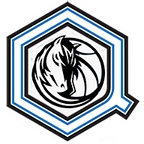Analyzing Myles Turner’s Potential Fit with the Mavericks: Dispelling Misconceptions
Editors note: The source material for this article came from a recent forum discussion on mavsboard.com.
The rumored interest in Myles Turner by the Dallas Mavericks has sparked discussions about his suitability for the team. However, it is essential to separate facts from misconceptions when evaluating his potential contribution. By scrutinizing Turner’s defensive prowess, rebounding abilities, and overall impact, we can gain a more accurate understanding of his fit with the Mavericks.
Defensive Aptitude
Some arguments have been made against Turner’s defensive capabilities, citing his DFG% (Defensive Field Goal Percentage) and defensive rating. However, a closer examination reveals a different story. Turner’s DFG% of 49.7% overall, with a 58.5% rate within six feet, is commendable. In fact, it surpasses the expected outcome of 65.1% by a significant margin. On the other hand, Wood’s defensive performance shows a 48.5% DFG% overall and 48% within the paint, indicating comparable defensive numbers.
While raw statistics provide insight, it is essential to consider contextual factors such as shot circumstances. Tracking data, coupled with the eye test, confirms Turner’s prowess as a rim protector, comparable to standout defenders like Rudy Gobert and Robin Lopez. Additionally, +/- numbers consistently rank Turner among the league’s best defenders over the last five seasons, showcasing his positive impact on different lineups and team schemes.
Rebounding Efficiency
Critics have pointed out Turner’s rebounding statistics, suggesting his subpar performance. However, relying solely on individual rebounding numbers can be misleading. Metrics like REB% or adjusted REB chance fail to consider the larger impact a big man has on team rebounding percentages. For instance, players like Steven Adams and Robin Lopez may have low rebounding numbers, yet their team’s rebounding performance improves when they are on the court due to their disciplined box-out techniques.
While Turner may not possess the same rebounding prowess as Adams or Lopez, he does not hurt his team on the defensive boards. Offensive rebounding opportunities can also be limited for stretch bigs like Turner, as their role often prioritizes floor-spacing. Thus, evaluating Turner’s rebounding capability solely on counting stats overlooks the larger dynamics at play.
Conclusion
When assessing Myles Turner’s potential fit with the Dallas Mavericks, it is crucial to separate fact from misconception. Turner’s defensive skills, as indicated by shot defense statistics and +/- numbers, establish him as a valuable rim protector. Similarly, his rebounding impact, while not reflected in individual numbers, cannot be discounted when considering his disciplined box-out techniques and team-oriented approach.
As the trade discussions progress, it is important to approach player evaluations with a comprehensive understanding of their recent performances, team dynamics, and the larger context of the game. While there may be valid concerns regarding Turner’s health and specific statistical comparisons to other players, his overall skill set and track record should not be dismissed outright. Ultimately, it will be the decision-makers’ responsibility to weigh these factors and determine the best fit for the Mavericks’ roster.
